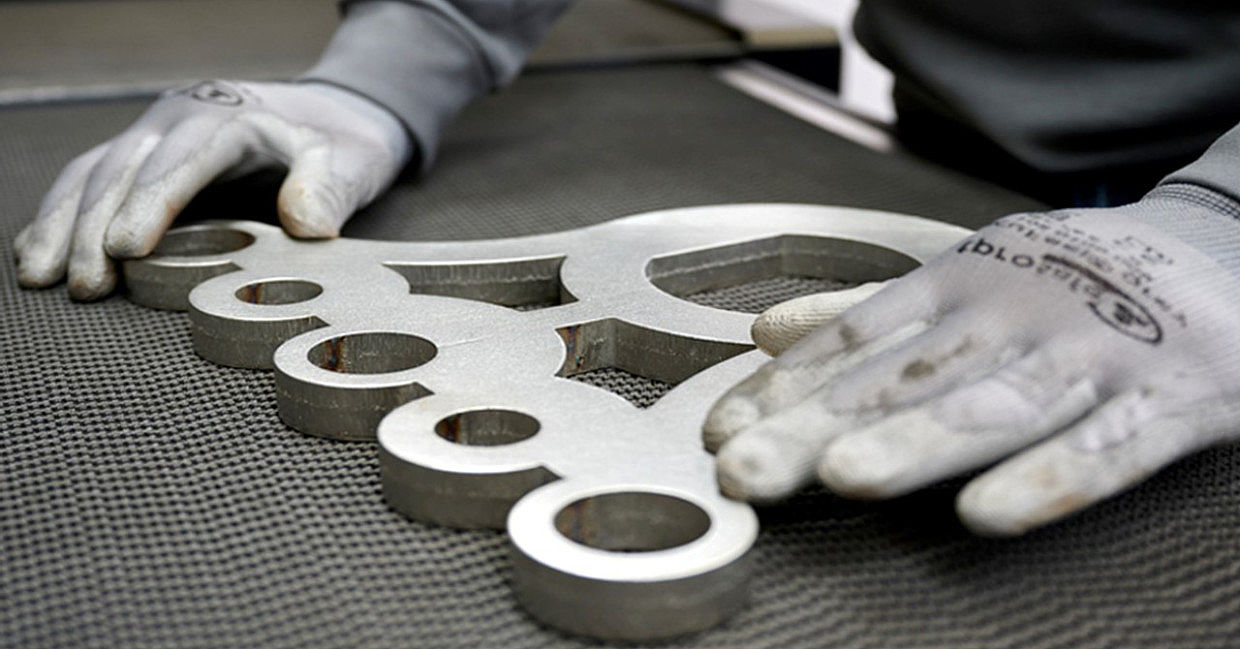1. Rounded edges improve paint adhesion
Liquid coating materials, as well as powder coatings, have a tendency to edge curl. As the coating cross-links, there is a risk that it will pull back over the sharp edge or ridge. This would prevent the coating to form a closed layer around the entire material. The sheet edge is exposed to atmospheric oxygen and other external influences without protection. Thus, it is better to avoid sharp edges, especially on materials at risk of corrosion.
2. Galvanized parts need rounded edges
There is no edge alignment with zinc coatings. Even sharp corners and edges are automatically galvanized to at least the same thickness as the surface. The reason why the edges have to be rounded is different: Other than the zinc coating on smooth surfaces, the zinc coating in the immediate edge area is much more sensitive to impacts. It can therefore happen that galvanized components are fine at inspection after the zinc bath or during delivery to the construction site. However, after assembly or shortly after commissioning, edge defects can appear. Micrographs show this: Depending on the steel composition, the structure of the zinc coating on sharp edges is clearly disturbed. Even slightly rounded edges show a much more consistent layer structure on identical steel. For this reason, the DIN EN 1090 standard for steel structures, for example, requires that the edges of sheet metal parts are rounded with a radius of at least 2 millimeters. This then ensures corrosion protection.
3. Rounded sheet metal edges prevent failures
Out of sight, out of mind? Some sheet metal workers like to forego edge rounding when they install parts internally. This is not necessarily a good idea: In many machines, pneumatic or hydraulic hoses move back and forth during operation. This is also possible for power cables. If these hoses or cables travel along a sharp sheet metal edge, they will inevitably suffer damage during continuous operation. Rounded sheet edges therefore prevent machine failures.
4. Round edges protect users
Sharp sheet edges can cause injuries and cuts. Every manufacturer will wish to avoid these injuries. This is why rounded edges are absolutely necessary. Another application involves laboratory gloves that must not be damaged by sharp sheet metal edges during handling.
5. Rounding edges - for your own safety at work
A company's own employees also benefit from rounded edges. Just like the users, they can injure themselves on sharp sheet metal edges. Work gloves help, but they also wear out in the long term. So if you round off the edges, you also increase your own occupational safety.Incidentally, edge rounding is a task that the deburring machine also performs. After deburring, the sheet metal has a sharp edge. To round it, deburring machines use their own tools in a second unit. At the same time, this second unit removes the secondary burr created in the first deburring step. Special investments for this process step are therefore not necessary. Vibratory or tumble deburring also results in rounded edges in the process.



